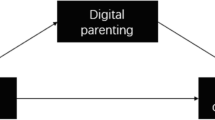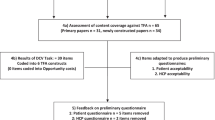Abstract
Aim
The early part of 2022 witnessed an acute shortage of infant formula, resulting in infant food insecurity. As in any public health crisis, dissemination of information by internet portals such as YouTube is critical to educate the public. This study reflects the results of a content analysis of most-trending YouTube videos related to the 2022 infant formula shortage in the United States.
Subject and methods
Ninety-three videos were coded for content categories specific to the Centers for Disease Control and Prevention (CDC) and the American Academy of Pediatrics (AAP) recommendations, and analyzed if content categories were statistically affected by the source of videos.
Results
Videos created by professionals or governmental agencies comprised only 4% of the trending videos and did not address consumer-useful CDC and AAP recommendations.
Conclusion
Our results highlight a missed opportunity by professional individuals, organizations and governmental agencies to use internet forums such as YouTube to meaningfully address a wide-ranging public health crisis.
Similar content being viewed by others
Data availability
Data generated and analyzed during the current study are available from the corresponding author on reasonable request.
Code availability
Not applicable
References
Abrams SA (2022) With the baby formula shortage, what should I do if I can’t find any. American Academy of Pediatrics, Itaska IL. https://www.healthychildren.org/English/tips-tools/ask-the-pediatrician/Pages/Are-there-shortages-of-infant-formula-due-to-COVID-19.aspx#:~:text=It%20can%20be%20tempting%20to,formula%20to%20help%20ease%20shortages. Accessed 13 Jul 2022
Academy of Nutrition and Dietetics (2018) For infants, hold the milk. https://www.eatright.org/health/pregnancy/breast-feeding/for-infants-hold-the-milk. Accessed 13 Jul 2022
Allen ME, Auld E, Logan R, Henry Montes JH, Rosen S (2017) Improving collaboration among health communication, health education, and health literacy. NAM perspectives. Discussion paper. National Academy of Medicine, Washington DC. https://doi.org/10.31478/201707c. Accessed 30 Nov 2022
American Academy of Pediatrics (2012) Breastfeeding and the use of human milk. Pediatrics 129(3):e827–e841
American Public Health Association (2022) The nation's health. https://www.thenationshealth.org/content/52/1/3.2. Accessed 21 Nov 2022
Bennett GG, Glasgow RE (2009) The delivery of public health interventions via the internet: actualizing their potential. Annu Rev Public Health 30(1):273–292
Centers for Disease Control and Prevention (2020) Breastfeeding report rard United States. https://www.cdc.gov/breastfeeding/data/reportcard.htm. Accessed 13 Jul 2022
Centers for Disease Control and Prevention (2022) Information for families during the infant formula shortage. https://www.cdc.gov/nutrition/infantandtoddlernutrition/formula-feeding/infant-formula-shortage.html#:~:text=Due%20to%20supply%20chain%20issues,for%20families%20across%20the%20country. Accessed 13 Jul 2022
Edworthy J, Hellier E, Newbold L et al (2015) Passing crisis and emergency risk communications: the effects of communication channel, information type, and repetition. Appl Ergon 48:252–262
Food and Drug Administration (2022) Infant formula: safety do's and don'ts. https://www.fda.gov/consumers/consumer-updates/infant-formula-safety-dos-and-donts#:~:text=Don't%20Make%20Homemade%20Formula,vital%20to%20an%20infant's%20growth. Accessed 13 Jul 2022
George DR, Rovniak LS, Kraschnewski JL (2013) Dangers and opportunities for social media in medicine. Clin Obstet Gynecol 56(3):453–462
Graham G (2021) Introducing new ways to help you find answers to your health questions. https://blog.youtube/news-and-events/introducing-new-ways-help-you-find-answers-your-health-questions/. Accessed 30 Nov 2022
Greysen SR, Kind T, Chretien KC (2010) Online professionalism and the mirror of social media. J Gen Intern Med 25(11):1227–1229
Harvard School of Public Health (2021) How do you communicate uncertainty and promote public health — during COVID-19 and beyond? https://www.hsph.harvard.edu/ecpe/how-to-communicate-uncertainty-and-promote-public-health-during-covid-19-and-beyond/. Accessed 30 Nov 2022
Health and Human Services (2022) Information for families during the formula shortage. https://www.hhs.gov/formula/index.html. Accessed 13 Jul 2022
Kelly CA, Sharot T (2021) Individual differences in information-seeking. Nat Commun 12:7062
Ladouceur R, Gosselin P, Dugas MJ (2000) Experimental manipulation of intolerance of uncertainty: a study of a theoretical model of worry. Behav Res Ther 38(9):933–941
Martin CR, Ling PR, Blackburn GL (2016) Review of infant feeding: key features of breast milk and infant formula. Nutrients 8(5):279
Meek JY, Noble L (2022) Section on breastfeeding. Policy. Statement: Breastfeeding and the use of human milk. Pediatrics 150(1):e2022057988
Milliken Institute (2022) Health literacy in the United States, enhancing assessments and reducing disparities. Milliken Institute, Washington DC. https://milkeninstitute.org/sites/default/files/2022-05/Health_Literacy_United_States_Final_Report.pdf. Accessed 30 Nov 2022
Minnesota Department of Health (2014) Community health services administration handbook. Minnesota Department of Health, St, Paul MN. https://www.health.state.mn.us/communities/practice/resources/chsadmin/docs/CHSAdminHB.pdf. Accessed 13 Jul 2022
Organization for Economic Co-operation and Development (2015) The use of social media in risk and crisis communication. Organization for Economic Co-operation and Development, Paris. https://read.oecd-ilibrary.org/governance/the-use-of-social-media-in-risk-and-crisis-communication_5k3v01fskp9s-en#page1. Accessed 28 Nov 2022
Patel JK, Rouster AS (2021) Infant nutrition requirements and options. In: StatPearls [Internet]. StatPearls Publishing, Treasure Island FL. https://www.ncbi.nlm.nih.gov/books/NBK560758/. Accessed 28 Jun 2022
Quinn EK, Fenton S, Ford-Sahibzada CA et al (2022) COVID-19 and Vitamin D misinformation on YouTube: content analysis. JMIR Infodemiology 2(1):e32452
Rutten FLJ, Blake KD, Greenberg-Worisek AJ, Allen SV, Moser RP, Hesse BW (2019) Online health information seeking among US adults: measuring progress toward a healthy people 2020 objective. Public Health Rep 134(6):617–625
Samuel L, Goodstein L, Basch CH (2022) Online news coverage of infant formula shortage in the United States: a content analysis. Dialogues in Health 1:100065
Thompson LA, Dawson K, Ferdig R, Black EW, Boyer J, Coutts J, Black NP (2008) The intersection of online social networking with medical professionalism. J Gen Intern Med 23(7):954–957
Tulane University (2022) Ten strategies for effective health communication. Tulane University, New Orleans LA. https://publichealth.tulane.edu/blog/health-communication-effective-strategies/#main. Accessed 30 Nov 2022
Wang X, Shi J, Kong H (2021) Online health information seeking: a review and meta-analysis. Health Commun 36(10):1163–1175
World Health Organization (2021) Infant and young child feeding. World Health Organisation, Geneva. https://www.who.int/news-room/fact-sheets/detail/infant-and-young-child-feeding. Accessed 28 Jun 2022
World Health Organization (2022) Tactics to apply to make your communications understandable. World Health Organisation, Geneva. https://www.who.int/about/communications/understandable/visuals. Accessed 30 Nov 2022
Zaila KE, Osadchiy V, Anderson AS, Eleswarapu SV, Mills JN (2020) Popularity and worldwide reach of targeted, evidence-based internet streaming video interventions focused on men's health topics. Transl Androl Urol 9(3):1374–1381
Author information
Authors and Affiliations
Contributions
LG contributed to data collection, LS contributed to data analysis, LS and CB contributed to study conceptualization, design, data analysis. All authors contributed to manuscript preparation and revision.
Corresponding author
Ethics declarations
Ethics approval (include appropriate approvals or waivers)
Since the study did not involve participation of human subjects, it was not reviewed by Lehman College’s Institutional Review Board.
Consent to participate
Not applicable
Consent for publication
Not applicable
Conflicts of interest/Competing interests
None of the authors have any conflicts of interests to declare.
Additional information
Publisher’s note
Springer Nature remains neutral with regard to jurisdictional claims in published maps and institutional affiliations.
Appendix
Appendix
Table 3
Rights and permissions
Springer Nature or its licensor (e.g. a society or other partner) holds exclusive rights to this article under a publishing agreement with the author(s) or other rightsholder(s); author self-archiving of the accepted manuscript version of this article is solely governed by the terms of such publishing agreement and applicable law.
About this article
Cite this article
Samuel, L., Goodstein, L. & Basch, C.H. Coverage of the 2022 infant formula shortage on YouTube: a conversation driven by news media. J Public Health (Berl.) 32, 349–354 (2024). https://doi.org/10.1007/s10389-023-01821-8
Received:
Accepted:
Published:
Issue Date:
DOI: https://doi.org/10.1007/s10389-023-01821-8




